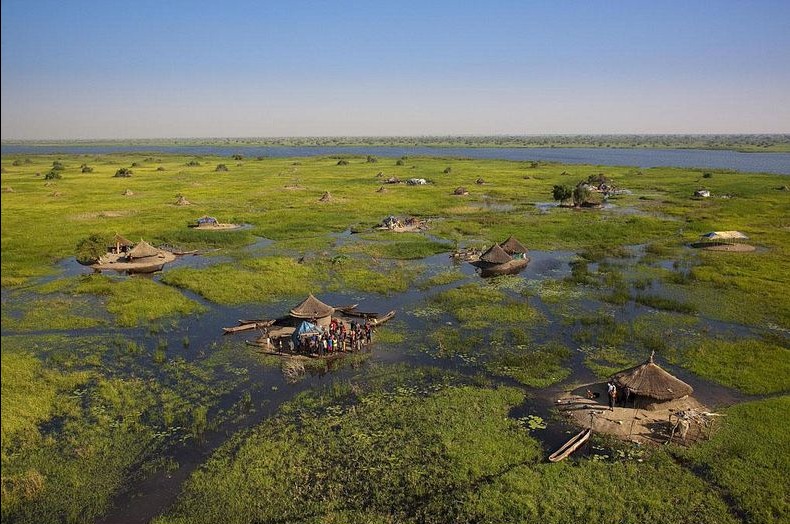The Impenetrable Wetlands of Sudd in South Sudan
The Sudd is a vast expanse of swampy lowland region in central
South Sudan, formed by the river White Nile. The area which the swamp
covers is one of the world's largest wetlands in the Nile basin. Its
size is highly variable, averaging over 30,000 square kilometers, but
during the rainy season depending on the inflowing waters, the Sudd can
extend to over 130,000 square km or an area the size of England.
The
Sudd is drained by headstreams of the White Nile, namely the Al-Jabal
(Mountain Nile) River in the centre and the Al-Ghazāl River in the west.
In the Sudd, the river flows through multiple tangled channels in a
pattern that changes each year. Papyrus, aquatic grass, and water
hyacinth grows in dense thickets in the shallow water, which is
frequented by crocodiles and hippopotami. Sometimes the matted
vegetation breaks free of its moorings, building up into floating
islands of vegetation up to 30 km in length. Such islands, in varying
stages of decomposition, eventually break up.
The Sudd is
considered to be nearly impassable either overland or by watercraft.
Thick with reeds, grasses, water hyacinth, and other water loving
plants, the Sudd can form massive blocks of vegetation that can shift
position and block navigable channels creating an ever-changing network
of water. Sometimes there is no channel a boat can travel on that will
lead through the bog. For centuries this region has prevented explorers
from travelling along the Nile and is only sparsely inhabited by the
pastoral Nilotic Nuer people.








